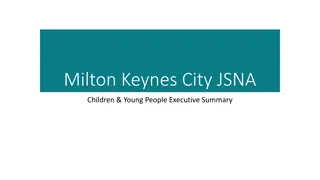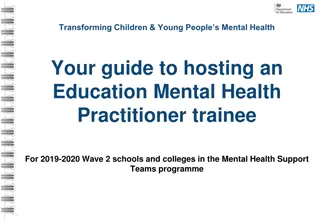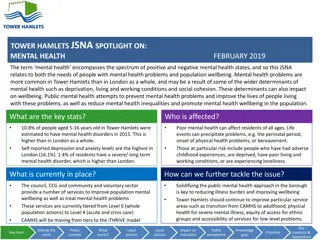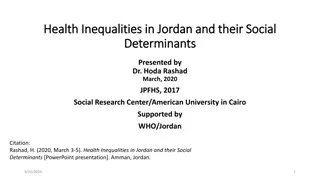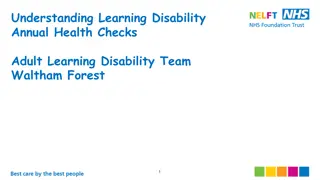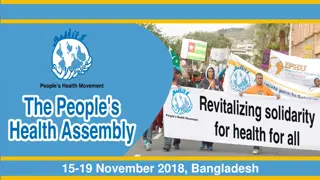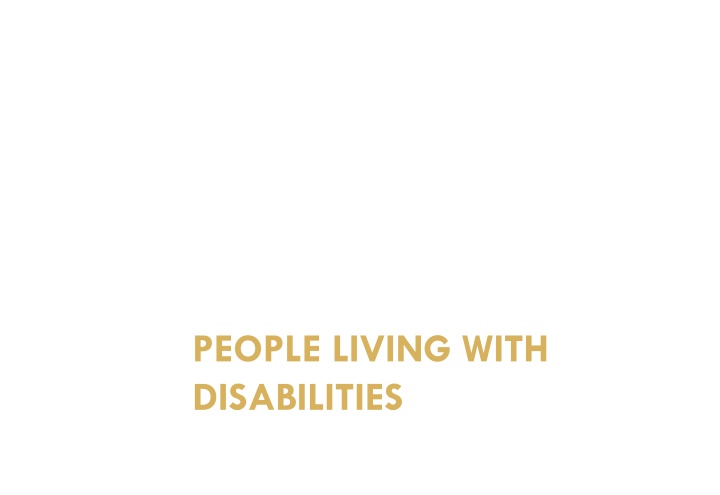
Understanding Health, Disability, and Quality of Life
Explore the dimensions of health, from the spectrum of positive and negative health to the right-based approach. Learn about disability concepts, interventions, and the significance of quality of life in individuals' well-being. Discover the evolving definition of health and the shift towards a holistic view encompassing physical, mental, social, and economic aspects.
Download Presentation

Please find below an Image/Link to download the presentation.
The content on the website is provided AS IS for your information and personal use only. It may not be sold, licensed, or shared on other websites without obtaining consent from the author. If you encounter any issues during the download, it is possible that the publisher has removed the file from their server.
You are allowed to download the files provided on this website for personal or commercial use, subject to the condition that they are used lawfully. All files are the property of their respective owners.
The content on the website is provided AS IS for your information and personal use only. It may not be sold, licensed, or shared on other websites without obtaining consent from the author.
E N D
Presentation Transcript
PEOPLE LIVING WITH DISABILITIES
Learning objectives Distinguish between health and quality of life 1. Portray with a diagram the spectrum of health 2. Develop an understanding to the concept of disability 3. Recognize that the term handicap doesn t exist anymore 4. Compare between the medical model and social model of disability 5. Explain the strengths of the ICF in mapping disabilities, prevention and interventions 6. Distinguish between capacity and performance 7. State the main health conditions associated with disability 8. List the disabling barriers 9. Outline the interventions for prevention of disabilities and rehabilitation 10. Give an account on CBR 11.
Definition of health State of complete physical, mental, and social well- being, not merely the absence of disease or infirmity"(WHO, 1948). In recent years, this statement has been amplified to include the ability to lead a "socially and economically productive life
Dimensions of health RIGHT BASED APPROACH TO HEALTH
Health Disease spectrum POSITIVE HEALTH POSITIVE Better health Freedom from disease Unrecognized disease NEGATIVE Mild disease Severe disease DEATH
Quality of life Individual's PERCEPTION OF THEIR POSITION in life in the context of the culture and value systems in which they live and in relation to their goals, expectations, standards and concerns. (WHO)
Summary - 1 A single definition of health referring to the level of health that people and nations strives to achieve Health is multidimensional People are moving across the spectrum of health Health is a right and not a need Quality of life is a subjective state and should be considered
Disability A long-term physical, mental, intellectual, or sensory impairment which in interaction with various barriers may hinder their full and effective participation in society on an equal basis with others.
Magnitude of disability - Global Nearly 10% of the world s population lives with disabilities (650 millions) 80% of persons with disabilities live in developing countries Nearly 200 million children are living with disability In any population at least 2.5% of children below the age of 15 years have an overt moderate to severe degree of physical or intellectual impairment and an additional 8% are expected to have learning or behavioral difficulties or a combination of both learning and behavioral difficulties Expected increase in the number of persons with disabilities as a result of population growth, the advances in medical technology and the ageing process. In countries with life expectancies exceeding 70 years, individuals spend on average 8 years or 11.5% of their life span living with disabilities World Report on Disabilities, 2011
Magnitude of disability - KSA It is estimated that 3.73% of the population has functional disabilities which limit their independence. Data from national census indicates that approximately 135,000 or nearly 0.8% of the total Saudi population has disability. The main causes of disabilities are cerebral palsy and developmental delay followed by road traffic accident. The main care gaps are low access to poor families, low service coverage, and low quality of services in public agencies. Al Jadid M. Disability in Saudi Arabia. Saudi Med J 2013; 34 (5): 453-60
Persons living with disability The needs of persons living with disabilities have been recognized more than three decades ago. 1981: Declared by the UN as the International Year of Disabled Persons with the theme of full participation and equality 1983 1993: International Decade of Disabled Persons 2007: Convention on the Rights of Persons with Disabilities , a legally binding document by international law.
Persons living with disability - KSA (1987) the legislation of disability (LD) passed as the first legislation for people with disabilities in KSA with provision to warrant equal rights (2000) the disability code was passed by the Saudi government to pledge that people with disabilities have access to free and appropriate medical, psychological, social, educational, and rehabilitation services through public agencies.
OCCURANCE OF DISABILITIES
Disability A long-term physical, mental, intellectual, or sensory impairment which in interaction with various barriers may hinder their full and effective participation in society on an equal basis with others.
Development of disability Disease Departure from health Impairment loss/damage of a body part or aberration of physiological functions Disability Inability to carry out function or activity Handicap limitation of person s role
Handicap Reduction in person s capacity to fulfill a social role as a consequence of an impairment, inadequate training for the role, or other circumstances . Applied to children, the term usually refers to: the presence of an impairment or other circumstances that are likely to interfere with normal growth and development or with the capacity to learn.
Medical model of disability DISEASE IMPAIRMENT DISABILITY HANDICAP Inability to carry out function or activity Role limitation Anatomical/p hysiological changes Departure from health
New approach to disability IMPAIRMENT IS THE BARRIER MEDICAL MODEL COMMUNITY ATTITUDES STRUCTURES OF THE SOCIETY ARE THE BARRIERS ENVIRONMENTAL BARRIERS SOCIAL MODEL INSTITUTIONAL BARRIERS
ACTION International Classification Of Functioning, Disability & Health (ICF) Health Condition (disorder/disease) Activities (Limitation) Body function & structure (Impairment) Participation (Restriction) Environmental Factors Personal Factors The International Classification of Functioning, Disability and Health (ICF) Source: Mont D. Measuring disability prevalence. World Bank Special Protection No. 0706, 2007 ACTION
Summary - 2 Disability is the consequence of an impairment caused by a health problem Handicap is the result of the barriers imposed on the disable; handicapped doesn t exist under the social model
ESTIMATION AND CLASSIFICATION OF DISABILITIES
ACTION International Classification Of Functioning, Disability & Health (ICF) Health Condition (disorder/disease) Activities (Limitation) Body function & structure (Impairment) Participation (Restriction) Environmental Factors Personal Factors The International Classification of Functioning, Disability and Health (ICF) Source: Mont D. Measuring disability prevalence. World Bank Special Protection No. 0706, 2007 ACTION
International Classification Of Functioning, Disability & Health (ICF) Activity limitations Refers to the difficulties in executing activities such as walking, eating, taking transport, counting money Participation restrictions Limitation or lack of involvement in any area of life such as education, gainful employment, spending leisure time.
ICF Estimation of disabilities A shift from impairment approach to a difficulties in functioning approach
ICF- Estimation of disabilities: Core questions Do you have difficulty seeing, even if wearing glasses? Do you have difficulty hearing, even if using a hearing aid? Do you have difficulty walking or climbing steps? Do you have difficulty remembering or concentrating? Do you have difficulty with self-care, such as washing all over or dressing? Using your usual (customary) language, do you have difficulty communicating (for example, understanding or being understood by others)? 1. 2. 3. 4. 5. 6.
ICF- Estimation of disabilities: Response and scoring Scoring: composite Range is 0 100 Response: Self report No difficulties Core domain Seeing Hearing Mild difficulties Mobility Score of 40= significant difficulties Moderate difficulties Cognition Self-care Severe difficulties Communication Score of 50= very significant difficulties Extreme difficulties
ICF Estimation of disabilities: Further details ICF determines The FUNCTION in which difficulties are experienced The body STRUCTURE affected Restriction in ACTIVITIES and PARTICIPATION Contributing ENVIRONMENTAL factors
ICF Estimation of disabilities: Further details Function Mental Sensory and Pain Voice and Speech Cardiovascular, Haematological, Immunological and Respiratory Systems Digestive, Metabolic, Endocrine Systems Genitourinary and Reproductive Neuromusculoskeletal and Movement-Related Functions of the Skin and Related Structures
ICF Estimation of disabilities: Further details Structure Structure of the Nervous System The Eye, Ear and Related Structures Structures Involved in Voice and Speech Structure of the Cardiovascular, Immunological and Respiratory Systems Structures Related to the Digestive, Metabolic and Endocrine Systems Structure Related to Genitourinary and Reproductive Systems Structure Related to Movement Skin and Related Structures
ICF Estimation of disabilities: Further details Activities and participation Learning and Applying Knowledge General Tasks and Demands Communication Mobility Self Care Domestic Life Interpersonal Interactions and Relationships Major Life Areas Community, Social and Civic Life
ICF Estimation of disabilities: Further details Environmental factors Products and Technology Natural Environment and Human-Made Changes to Environment Support and Relationships Attitudes Services, Systems and Policies
ICF Estimation of disabilities: Further details Environmental factors: capacity versus performance Capacity indicates what a person can do in a standardized environment, often a clinical setting, without the barriers or facilitators of the person s usual environment; Performance indicates what a person does in the current or usual environment, with all barriers and facilitators in place
Health conditions associated with disability Infectious diseases Non-communicable diseases Children learning disabilities (associated with autism, attention deficit) Hearing problems Vision disorders Speech problems Dyslexia Cerebral palsy HIV/AIDS Diabetes Malaria Cardiovascular Poliomyelitis Mental disorders Leprosy Cancers Trachoma Respiratory illnesses Arthritis and back pain Injuries
Health conditions associated with disability Secondary Developed as a result of the primary Primary Co-morbidity Unrelated condition Starting problem Reason for impairment, activity limitations, or participation Results in reducing functioning, lower quality of life, increase health care cost, and pre- mature death Results in difficulties in managing and aggravation of disability
ICF Estimation of disabilities: Examples Health condition Leprosy Impairment Activity Participation Loss of sensation Difficulties grasping Unemployment Epilepsy Neurologic Being on his own No schooling Vitiligo Disfigurement None Social relations Unemployment , social relations Past mental disorders None None
ICF Estimation of disabilities: Examples for intervention and prevention Intervention Medical treatment or care Prevention Health promotion, Nutrition, Immunization Health condition Impairment Medical treatment or care Surgery Assistive devices Personal assistance Rehabilitation therapy Prevention of the development of further activity limitations Activity limitation Preventive rehabilitation, Prevention of the development of participation restrictions Participation restriction Accommodations, Public education Anti-discrimination law Universal design Environmental change, Employment strategies, Accessible services, Universal design, Lobbying for change
Summary - 3 ICF Universal tool for classification and reporting of disabilities It is a shift from cause to impact It is based on the perception of individual functioning or disability as a dynamic interaction between health status, personal factors, environmental condition and will have an impact on disability policy and services Basis for intervention and prevention
DISABLING BARRIERS AND THEIR EFFECTS
Disabling barriers Inadequate policies and standards which does not consider the needs of people with disabilities, or existing policies and standards are not enforced. Insufficient funding for implementation of policies and plans Negative attitudes leading to rejection and marginalization Specialized services: availability, accessibility and quality Lack of accessibility to transport and information system (sign language) Lack of consultation and involvement of persons with disability Lack of statistics = persons with disabilities are not seen
Effects of disabling barriers Poor health outcomes (preventable secondary and co- morbid conditions) Low education attainment Lower economic participation Higher rates of poverty Higher rates of dependency and restricted participation
Prevention of disabilities Major interventions provided by general services for prevention of childhood disabilities Pre-marital genetic counseling (hereditary conditions) Maternal and neonatal care (ante-natal and natal events) Screening of neonates for hypothyroidism (cretinism preventable cause of mental disability) Expanded program on immunization School services (growth monitoring and medical evaluation) Primary prevention of disabilities entails all interventions required for the prevention of underlying health problems
ICF Estimation of disabilities: Examples for intervention and prevention Intervention Medical treatment or care Prevention Health promotion, Nutrition, Immunization Health condition Impairment Medical treatment or care Surgery Assistive devices Personal assistance Rehabilitation therapy Prevention of the development of further activity limitations Activity limitation Preventive rehabilitation, Prevention of the development of participation restrictions Participation restriction Accommodations, Public education Anti-discrimination law Universal design Environmental change, Employment strategies, Accessible services, Universal design, Lobbying for change
Rehabilitation Prevent activity limitation ======= Rehabilitation Outcome of rehabilitation Prevention of the loss of function Slowing the rate of loss of function Improvement or restoration of function Compensation for lost function Maintenance of current function
Rehabilitation Services - KSA (1960 S) Modern medical rehabilitation following an outbreak of poliomyelitis with many victims, mainly children. (1970 s) the government availed some prosthesis and orthotic centers in some of the MOH hospitals. (1980 s) the Ministry of Defense and Aviation (MODA) commissioned many medical rehabilitation centers within the Military Hospitals. (1980 s) Some private hospitals also allocated some rehabilitation beds for people who sustained work related disability and were insured by general organization for social insurance. (21st century) rehabilitation centers were opened in few of the MOH hospitals. In addition, there have been some private for non-profit centers, which opened, including Sultan Bin Abdulaziz Humanitarian City (Present) many rehabilitation hospitals/ centers, mainly in large cities, such as Rehabilitation Unit of Prince Sultan Military Medical City of Riyadh, Rehabilitation Unit of King Abdulaziz Medical City, National Guard (Riyadh), Rehabilitation Hospital of King Fahad Medical City (Riyadh), King Saud Medical Complex, Rehabilitation Hospital of Al-Hada Military Hospital (Taif ) and Riyadh Care Hospital (Private), and Abdulatif Jameel Rehabilitation Center (Jeddah). (Present) Disabled Children Association has 7 centers and provides medical, social, and vocational services for children. (Present) most of MOH hospitals in different regions of KSA have Medical Rehabilitation Department. Their services are mainly physiotherapy for outpatients. Al Jadid M. Disability in Saudi Arabia. Saudi Med J 2013; 34 (5): 453-60
Addressing barriers to participation restriction Rehabilitation: Building capacity of persons with disabilities Support and assistance: living in a community with provision of assistance services for meeting the needs including day care programs and home support system Environment: Policies and legislation and interventions for public facilities and transport system to promote participation and decrease dependency and social isolation Education: Policies and legislation to complete basic education, inclusion and mainstreaming Employment: Policies and legislation regarding employment, training for capacity building, inclusion in employment




